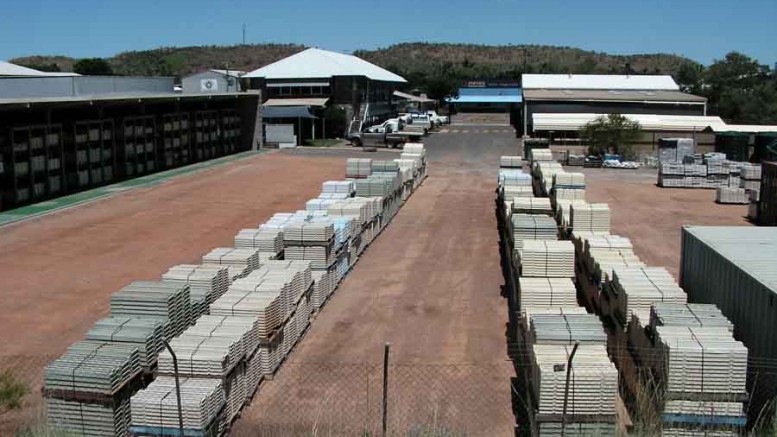It has taken 23 years, but the state government of Queensland has finally overturned a ban on uranium mining. The prohibition on uranium processing and waste storage, however, remains in place.
The announcement follows a recent trip to India during which Australian Prime Minister Julia Gillard was selling the benefits of uranium produced in Australia. Minister for Natural Resources and Mines Andrew Crisp estimates that Queensland’s known uranium deposits are worth US$10 billion, and the state government is convening a three-member committee to implement uranium mining.
While the news is positive for companies like Paladin Energy (PDN-T), which owns a significant stake in a large uranium deposit in the state, Matthew Gibson of CIBC World Markets says that it doesn’t mean that new projects will be developed in the near-term, citing the example of Western Australia, where a six-year ban on uranium mining was overturned in 2008. It took another four years, he says, for the state to approve the first uranium mine — Toro Energy’s (TOE-A) Wiluna project.
Gibson believes it may be another two years before any project in Queensland receives approval, but he argues that the decision “opens the door” for Paladin Energy to move its Mt. Isa joint-venture project forward.
Mt. Isa is a fifty-fifty joint venture between Paladin and Summit Resources (SMM-A), and contains 147 million lb. uranium oxide (U308). Total measured and indicated resources stand at 106.2 million lb. grading 743 parts per million (ppm) U308, and inferred resources add 40.7 million lb. at 574 ppm U308. Paladin owns 82.08% of Summit’s shares, which gives it a 91.04% stake in Mt. Isa, or about 132 million lb. U308.
Gibson calculates that Mt. Isa is one of the largest undeveloped uranium projects in Australia, but it is also one of the lowest-grade deposits. The Toronto-based analyst describes Mt. Isa as “relatively comparable” to the Yeelirie project that Cameco (CCO-T, CCJ-N) recently acquired in Western Australia.
At press time Paladin was trading at $1.25 per share, and Gibson has a 12- to 18-month target price of $3.70. He believes Paladin has “one of the steepest production-growth profiles” in his coverage universe, and forecasts production growing to 11 million lb. per annum over the next six years, as the company “establishes itself firmly in the top-tier of uranium producers worldwide.”
The pure-play uranium producer has two uranium mines in Africa, which produced 1.93 million lb. uranium in the three months ended Sept. 30, down 5.8% from the June quarter due to a planned 16-day maintenance shutdown at its Kayelekera mine in Malawi.
In the third quarter Kayelekera produced 638,950 lb. U308, while the company’s Langer Heinrich mine in Namibia produced 1.29 million lb. U308 — which is 99.2% of stage-three nameplate production. (Lower grades at Langer Heinrich were offset by higher-than-expected recoveries.)
Sales of 1.22 million lb. U308 generated US$61 million, or an average price of US$49.83 per lb. The average spot price for the quarter was US$48.95 per lb., and the company forecasts sales in the December quarter will reach 2 million lb.
Despite weaker-than-expected quarterly production and sales volumes, Gibson says in a research note that Paladin is trading near trough levels at 0.8 times net asset value, and is one of the least expensive in “our uranium-coverage universe.”
He says that “we believe the market has baked into the share price a lot of uncertainty regarding the uranium market, as well as investors taking a wait-and-see approach while execution and meeting production guidance remains a key focus.”
In the meantime, Paladin is focusing on production results and cutting costs, he adds. At Kayelekera, for instance, Paladin says there is greater likelihood of cheaper grid power within the next year. The company has held several meetings with local grid-power provider Eskom, and if it can connect to the grid, cash costs should come down by 10%.
David Sadowski of Raymond James in Vancouver published a six- to 12-month target price of $2 per share in a note on Oct. 16, after the company released its quarterly results and recommends “adding to positions on ramping production, cost optimization, minimal near-term credit risk, attractive valuation and takeout potential.”
He also argues that cost optimization efforts should bear fruit, and expects company-wide unit costs will fall from the high US$50s per lb. back to the mid- to low-US$30s per lb. by the end of the financial year. “In addition to ongoing programs to reduce operating expenditure [including acid, reagents, diesel and grid power at Kayelekera], the company announced it is looking to implement teeter separation at Langer in F2Q13E and nano-filtration at Kayelekera in F3Q13E, which should cut reagent consumption,” he says.
“Though likely to be a difficult quarter on an earnings basis, progress at the mines has put the company on track to meet year-end production guidance of 8 to 8.5 million lb., and in our view financial results should be much improved in F2Q13E,” Sadowski writes. “We believe Paladin shares are highly attractive at current levels, and may be pricing-in an unjustifiably high level of operational risk relative to peers.”


Be the first to comment on "Queensland lifts ban on uranium mining"